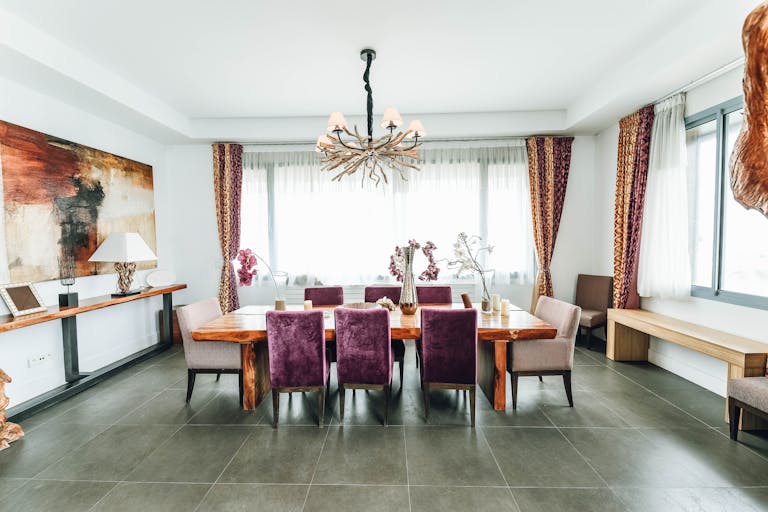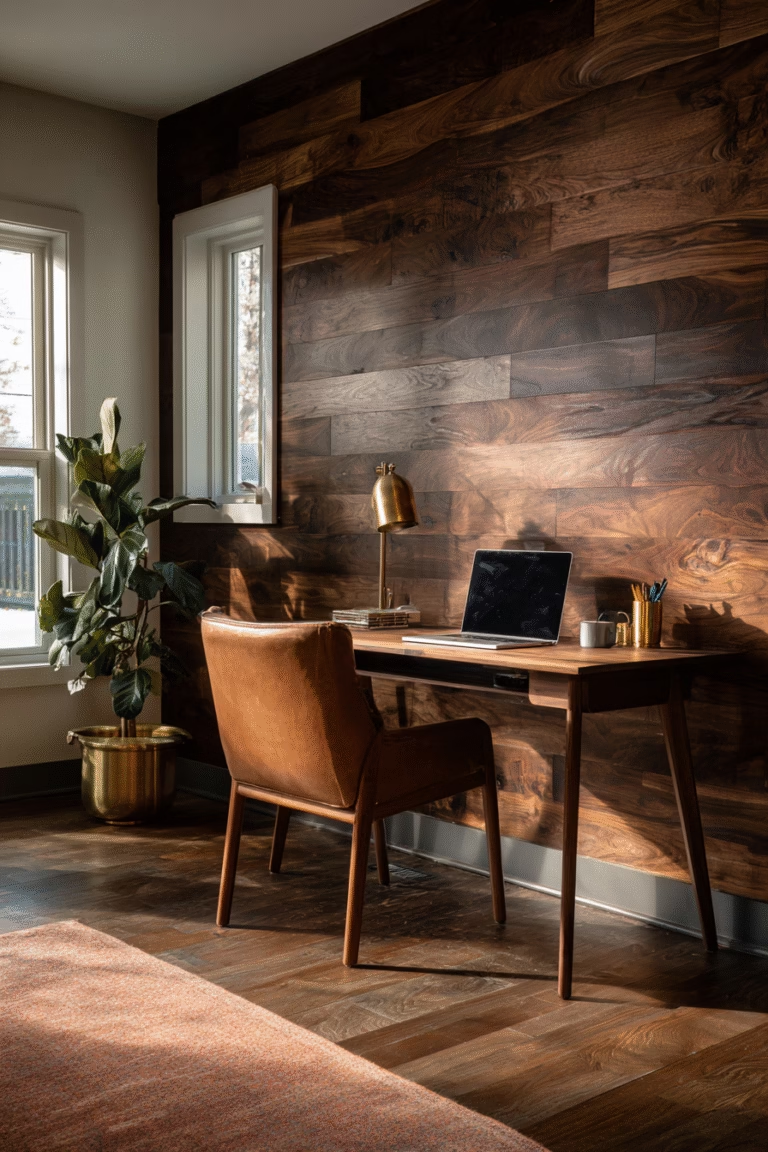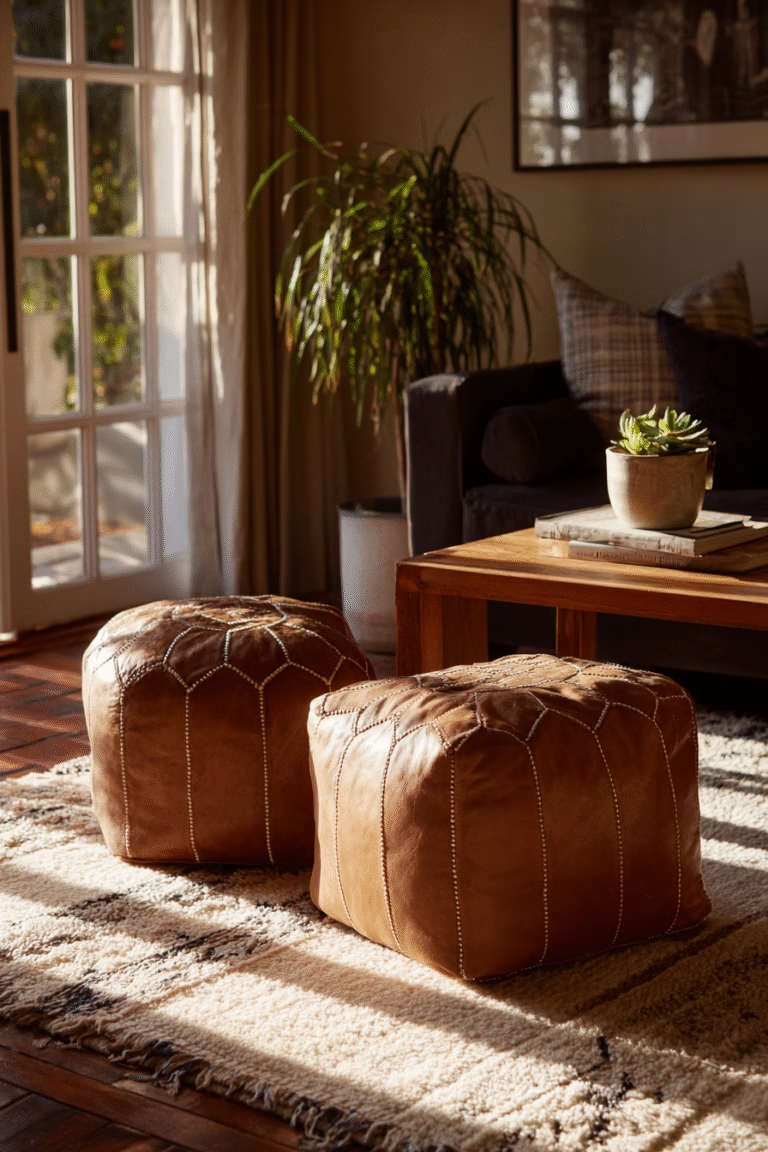23 Japandi Living Room Ideas to Create the Perfect Living Room
This site contains affiliate links. As an Amazon Associate, I earn from qualifying purchases. The content on this website was created with the help of AI. Please read our Editorial Policy for more information.
Ever feel overwhelmed by the chaos in your living room? The constant visual noise from too much stuff, clashing colors, and furniture that doesn’t quite work together can leave you feeling anything but relaxed. You deserve a space that actually helps you unwind after a long day.
Japandi living rooms solve this problem beautifully. This design approach blends the clean simplicity of Japanese minimalism with the cozy warmth of Scandinavian style. The result? A living room that feels both peaceful and incredibly functional. You’ll get natural materials, neutral colors, and furniture that actually serves a purpose—nothing extra, nothing missing.
These 23 japandi living room ideas will show you exactly how to transform your space into a calm retreat. From choosing the right wood tones to arranging furniture for better flow, you’ll discover practical ways to create a room that looks stunning and feels even better.

23 Japandi Living Room Ideas
1. Strip Away the Excess
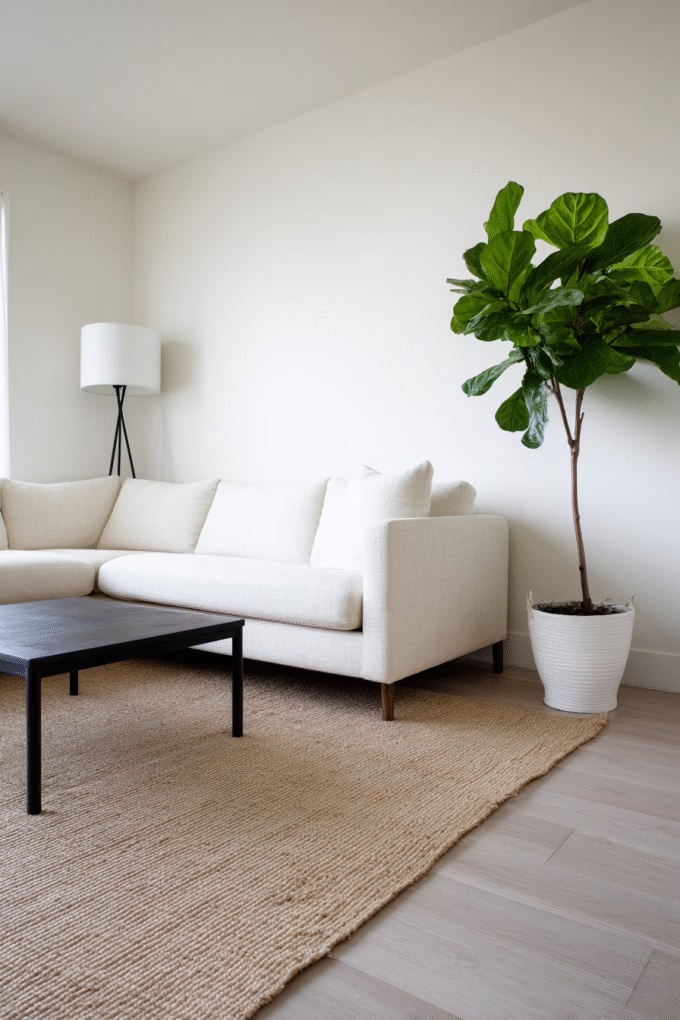
Your living room doesn’t need every decorative item you’ve ever purchased. Start by removing anything that doesn’t serve a clear purpose or bring genuine joy to your space. Keep your coffee table nearly bare—maybe a single book and a small plant at most.
This approach creates instant visual calm. When each item in your room has intention behind it, your space feels more organized and peaceful. You’ll notice the difference immediately when you walk through the door.
Focus on functional pieces with clean lines. Choose a simple sofa, a streamlined coffee table, and maybe one accent chair. Skip the decorative pillows that pile up unused, the extra side tables collecting clutter, and the knickknacks gathering dust.
2. Build Your Palette Around Soft Neutrals
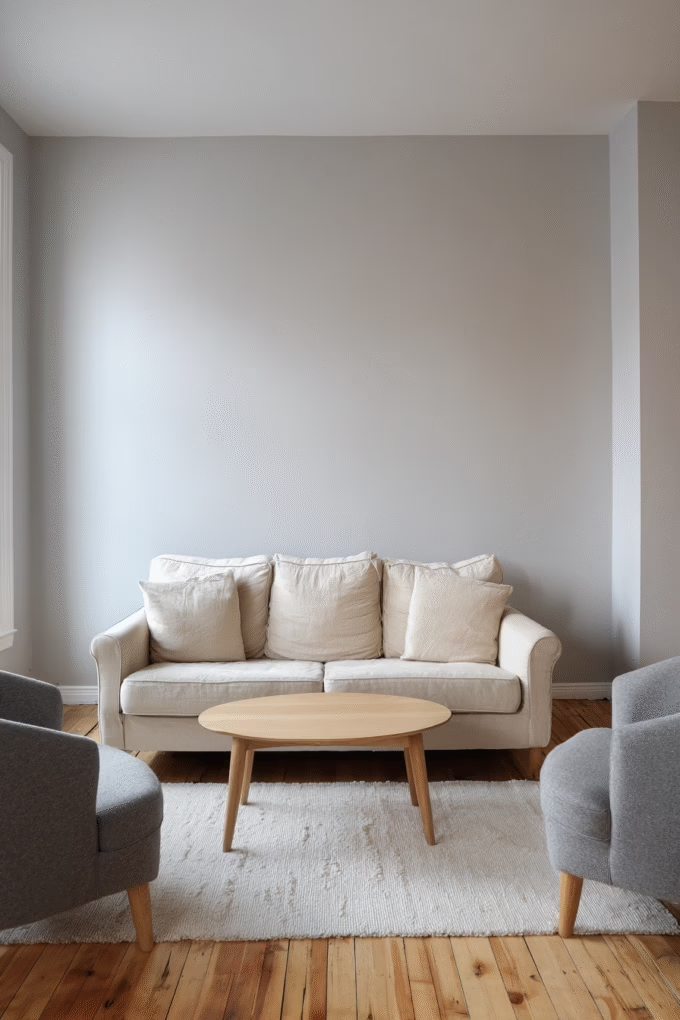
Cream, beige, soft gray, and warm white create the foundation for your japandi living room. These colors work together to make your space feel larger and more serene. Paint your walls a warm white or light greige, then choose furniture in complementary neutral tones.
Neutral doesn’t mean boring. Different shades of cream and beige layered together create subtle depth that’s far more interesting than stark white everything. Your eye moves easily through the space without getting caught on jarring color changes.
Stick to two or three neutral shades throughout your entire living room. Maybe warm white walls, a beige sofa, and gray accent chairs. This consistency creates the calm atmosphere that makes japandi living rooms so appealing.
3. Accept Imperfection as Part of the Design
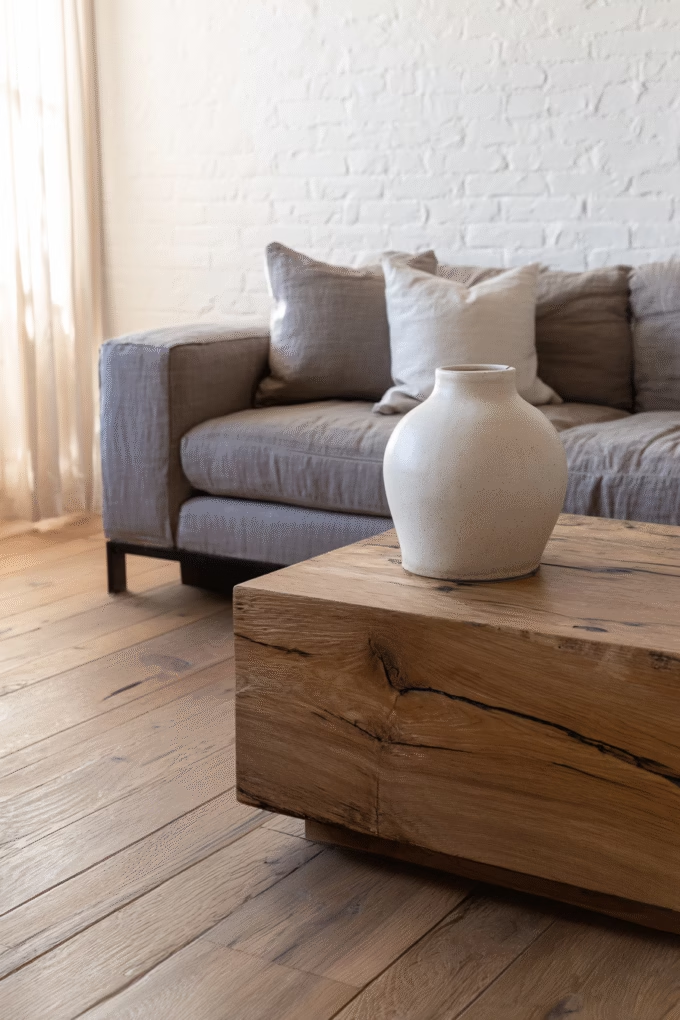
That crack in your plaster wall? The slight unevenness in your wooden floor? Stop trying to hide these natural imperfections. The Japanese concept of wabi-sabi celebrates the beauty in things that aren’t perfect, and this philosophy fits perfectly in japandi living rooms.
Choose furniture and materials that show their natural character. A wooden coffee table with visible grain patterns and slight color variations looks more authentic than something perfectly uniform. Raw concrete, unfinished wood edges, and handmade ceramics all embrace this idea.
This approach takes pressure off you to maintain an impossibly perfect space. Your living room becomes more relaxed and genuine when you stop fighting against the natural aging and settling that happens in every home.
4. Layer Different Wood Shades Throughout the Room
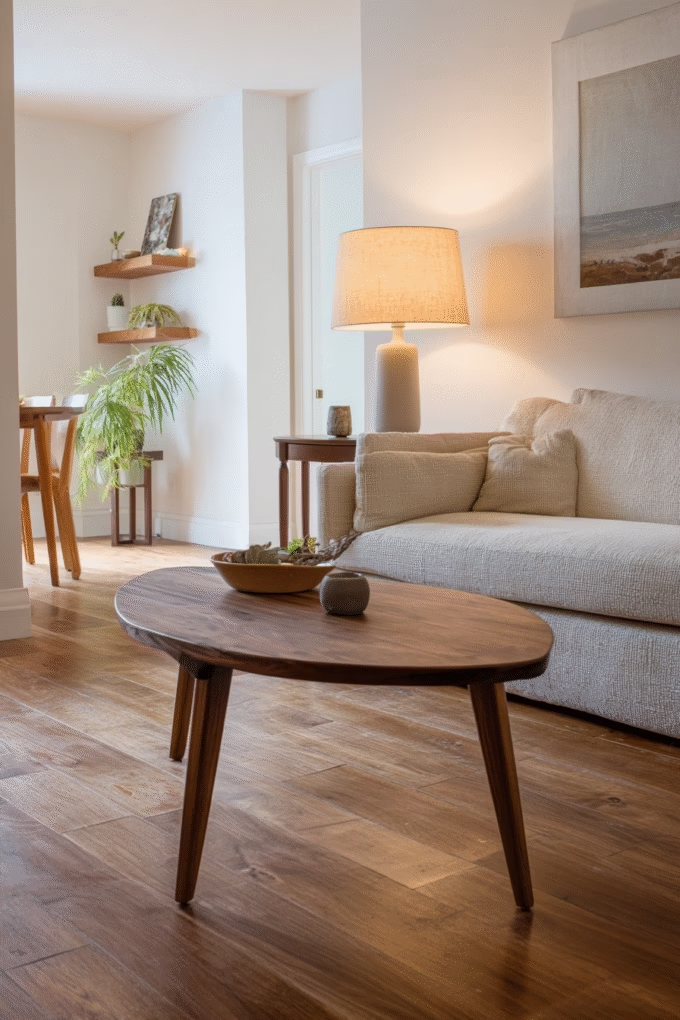
Matching wood tones perfectly is outdated. Mix light oak floors with a dark walnut coffee table and medium-toned wooden shelving. This variety adds visual interest while keeping the natural material focus that defines japandi living rooms.
The key is choosing wood pieces that vary enough to create contrast but still feel cohesive. Avoid mixing warm and cool wood tones in the same space—stick to all warm or all cool. Light ash and dark espresso both read as cool tones and work beautifully together.
This layered approach prevents your living room from looking flat or one-dimensional. Different wood tones catch light differently throughout the day, creating subtle shifts that keep your space feeling dynamic.
5. Make Wood the Star Material
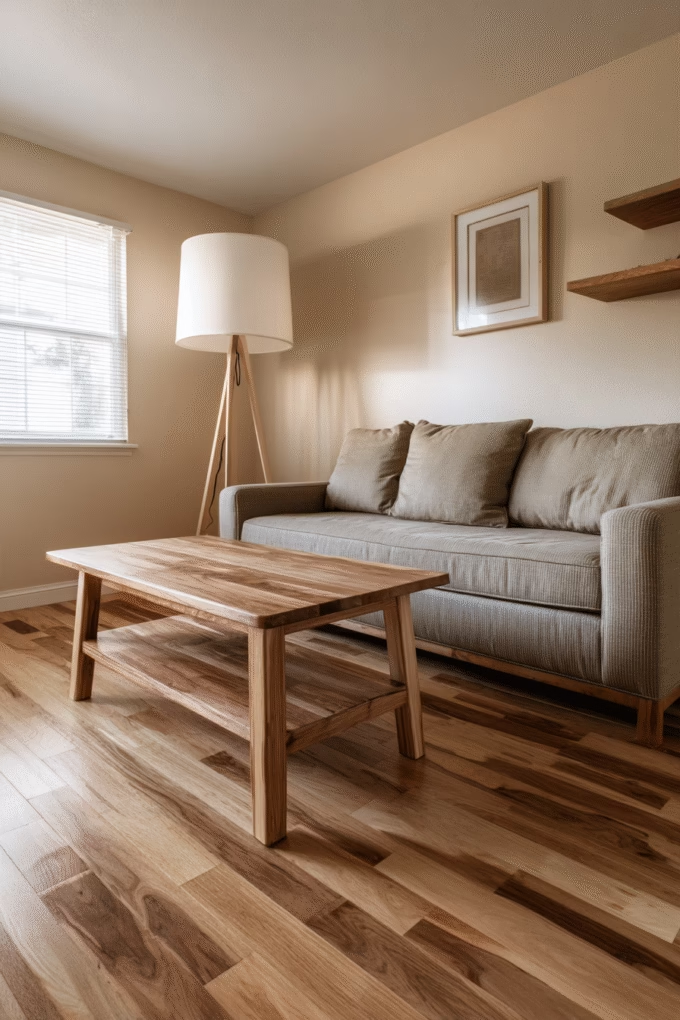
Wood brings instant warmth to your japandi living room. Use it generously—wooden floors, wooden furniture, wooden shelving, even wooden accent walls. Natural wood tones create the cozy foundation that balances out the minimalist aesthetic.
Look for furniture pieces that showcase the wood rather than hiding it under upholstery or paint. Exposed wooden legs on your sofa, a solid wood coffee table, and open wooden shelving all celebrate the material. Choose pieces with visible grain patterns that highlight the natural beauty.
Quality matters more than quantity with wooden furniture. One beautiful solid wood coffee table beats three cheaply made pieces. Invest in furniture that will age gracefully and last for decades rather than years.
6. Choose Natural Materials for Every Surface
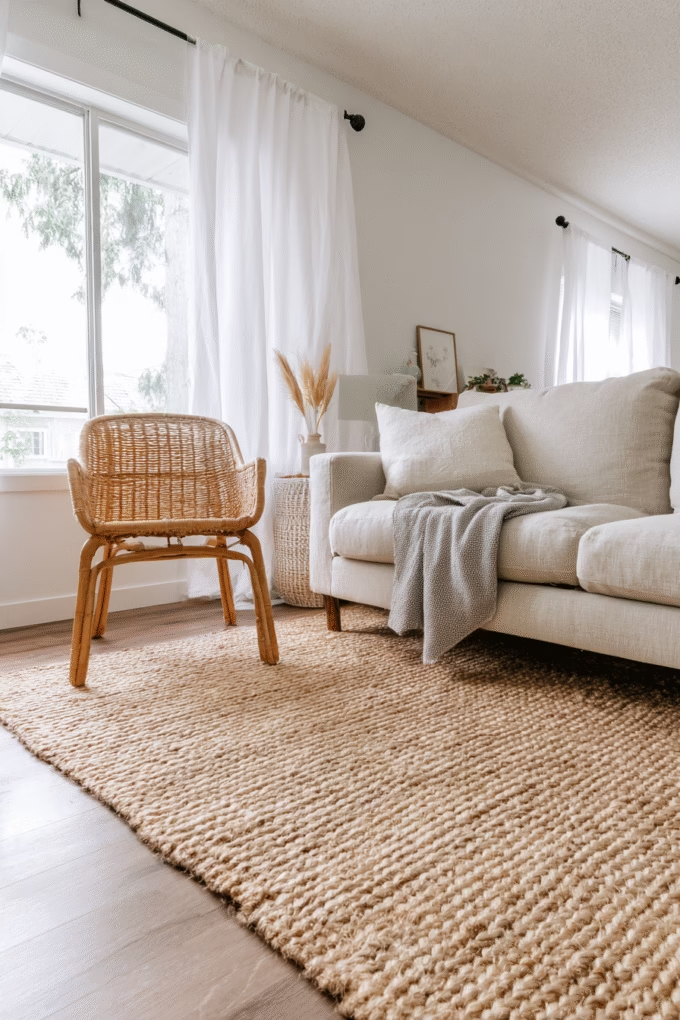
Linen, jute, cotton, wool, rattan, bamboo, stone—these materials define japandi living rooms. Replace synthetic fabrics and plastic decor with natural alternatives wherever possible. A jute rug instead of polyester, linen curtains instead of synthetic blends, wool throws instead of acrylic.
Natural materials age beautifully and feel better to touch. A linen sofa develops character over time rather than looking worn out. Cotton and wool regulate temperature better than synthetics, making your living room more comfortable year-round.
These materials also connect your indoor space to nature, which is central to both Japanese and Scandinavian design philosophy. Each natural texture adds subtle visual interest without creating visual clutter.
7. Add Living Greenery to Every Corner
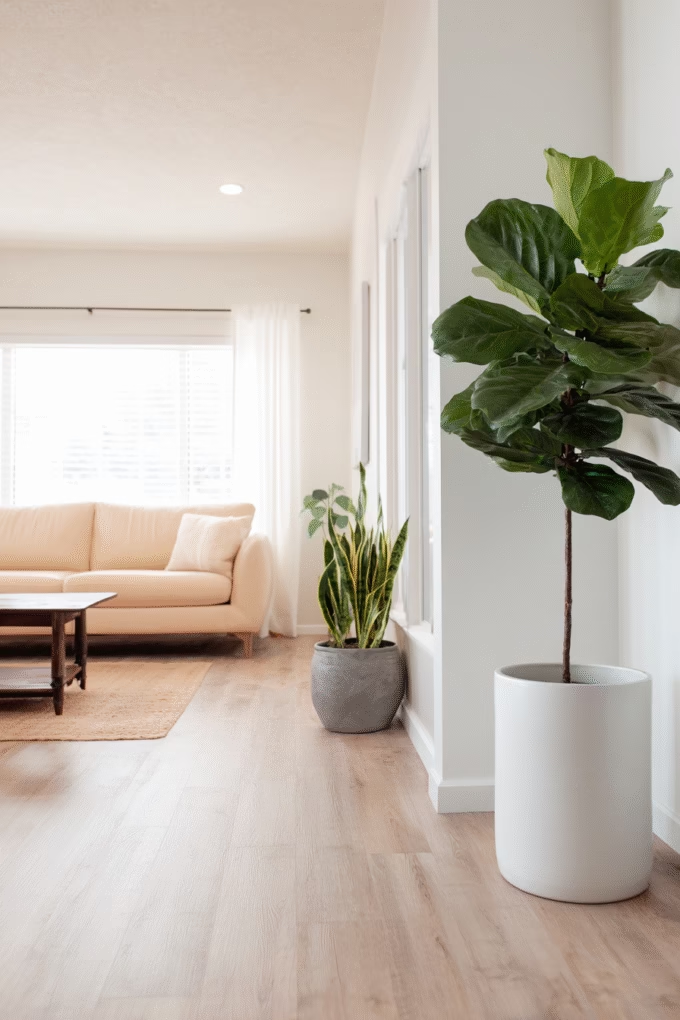
Plants breathe life into minimalist spaces. Add a tall fiddle leaf fig in the corner, a snake plant on your bookshelf, and a small potted succulent on your coffee table. Even a few well-placed plants make your japandi living room feel more alive and connected to nature.
Choose simple ceramic or terra cotta pots in neutral colors. Skip the decorative planters with patterns or bright colors—they compete for attention. White, cream, gray, and natural terra cotta all work beautifully with the japandi aesthetic.
Don’t overdo it. Three to five plants distributed throughout your living room is plenty. Each plant should have space to stand out rather than crowding together on one surface.
8. Invest in Timeless Furniture Pieces
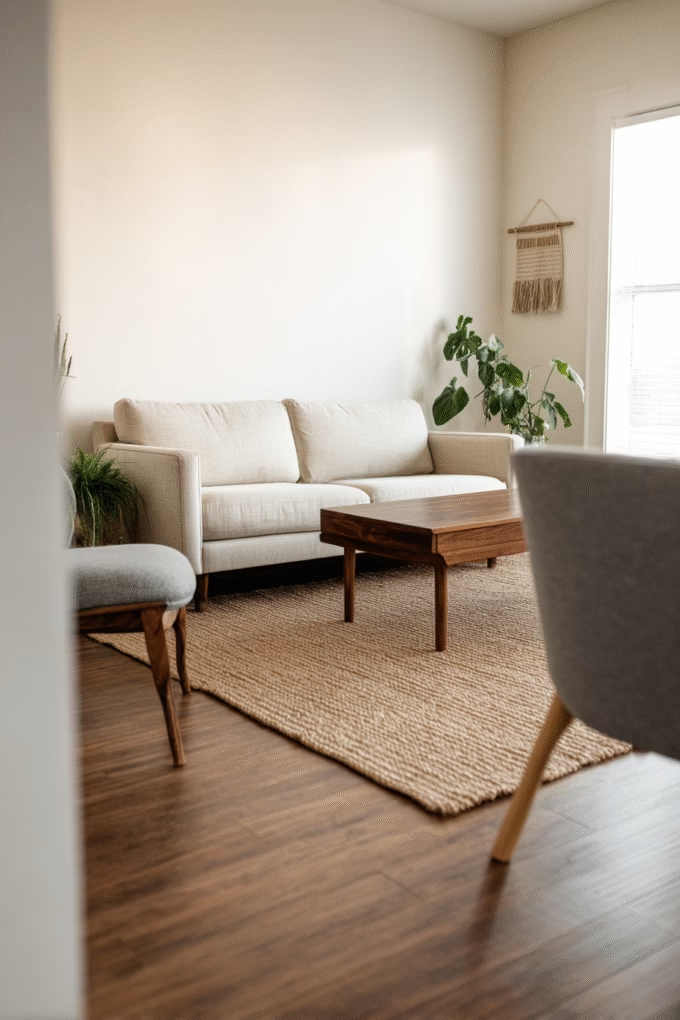
Trendy furniture dates quickly and looks out of place within a year or two. Choose classic silhouettes that have been around for decades and will remain beautiful for decades more. A simple wooden coffee table with clean lines never goes out of style.
Look for quality construction that will last. Solid wood frames, mortise and tenon joints, and high-density cushion foam mean your furniture will serve you for twenty years instead of five. This aligns perfectly with the japandi philosophy of buying less but buying better.
Avoid furniture with overly distinctive details that might feel dated later. Skip the tufted backs, decorative nailhead trim, or unusual shapes. Clean, simple, and well-made furniture always looks current.
9. Keep Your Coffee Table Nearly Empty
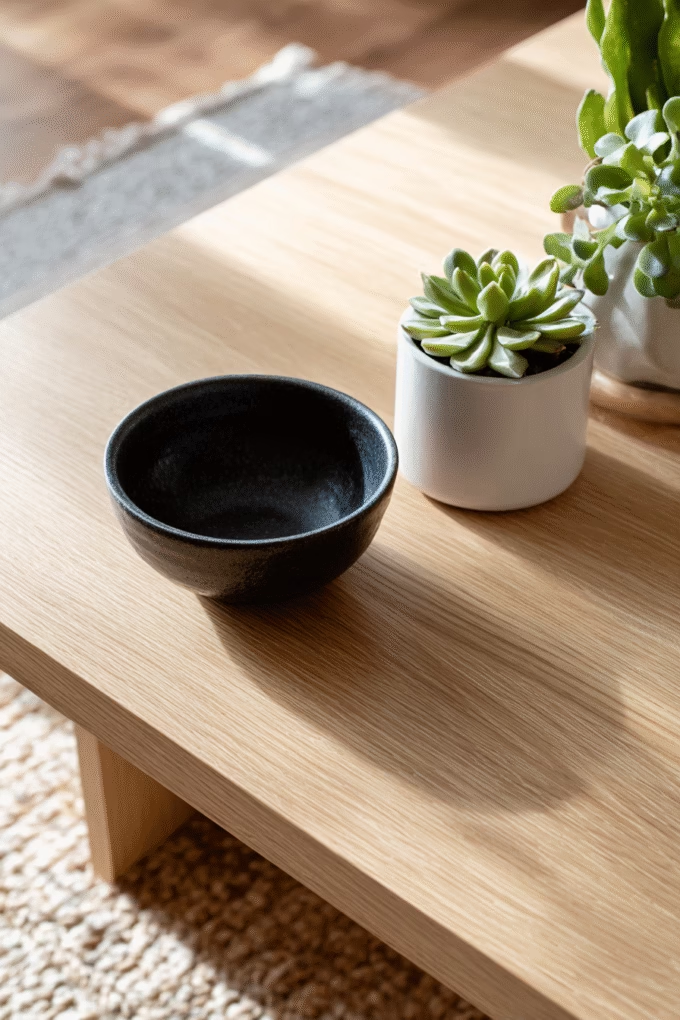
Your coffee table isn’t storage. Keep it clear except for one or two carefully chosen items—maybe a single decorative bowl and a small plant. This simple surface becomes a visual resting point that helps your entire living room feel more organized.
The empty space serves a purpose. It gives your eye a place to rest and makes your living room feel less busy. When every surface is covered with objects, your space feels cluttered even if it’s technically tidy.
Choose coffee table items that serve a function or bring genuine beauty. A wooden tray to corral remotes, a sculptural bowl, or a small vase with fresh branches—each item should earn its place.
10. Let Natural Light Fill Your Space
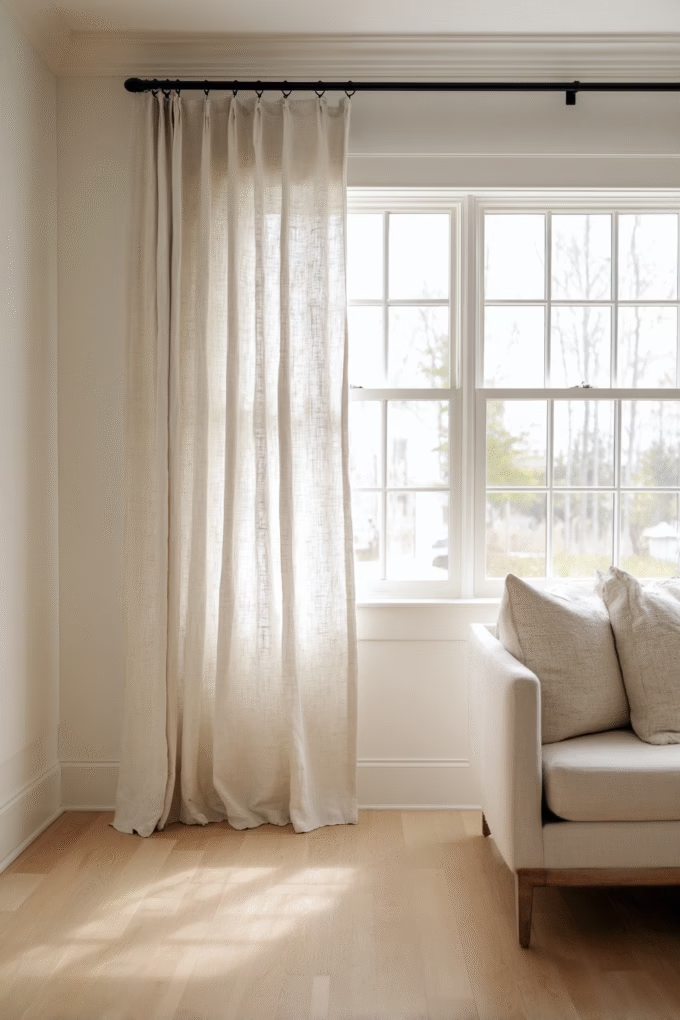
Heavy curtains block the natural light that makes japandi living rooms feel so peaceful. Replace them with sheer linen panels that provide privacy while still letting sunlight filter through. Your living room will feel immediately brighter and more open.
If you need more privacy, choose natural bamboo shades that you can lower when needed but still allow some light through. The woven texture adds visual interest while maintaining the natural material focus.
Keep window treatments simple. No valances, no decorative hardware, no layers of fabric. Simple panels on basic rods or clean bamboo shades create the uncluttered look that defines japandi design.
11. Add One Patterned Element
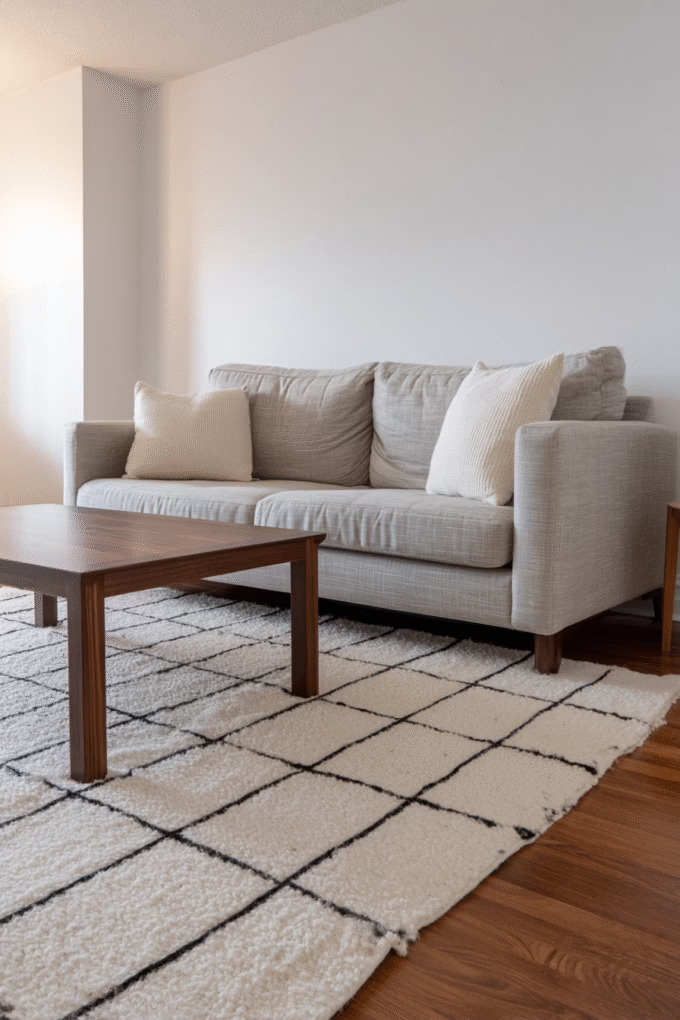
Your neutral japandi living room needs just one subtle pattern to add visual interest. A geometric rug with simple lines, a throw pillow with delicate stripes, or a piece of abstract art with organic shapes can provide this element without overwhelming the space.
Keep patterns simple and low-contrast. Black and cream stripes work better than bright multicolor patterns. Geometric designs should have clean lines and limited colors. The pattern should enhance your space, not demand attention.
One patterned piece is enough. If you choose a patterned rug, keep your pillows and throws solid. If you add patterned pillows, keep your rug neutral. This restraint maintains the calm atmosphere.
12. Balance Angular Tables With Curved Seating
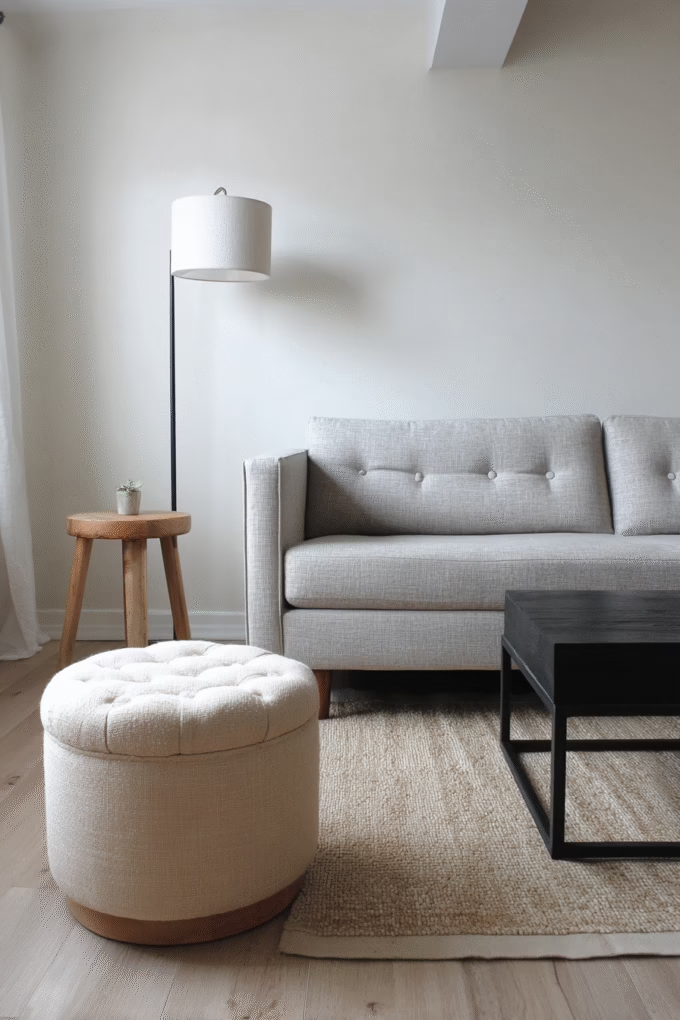
Hard edges everywhere creates a harsh feeling. Soften your japandi living room by pairing angular furniture with curved pieces. A square coffee table works beautifully with a rounded pouf or circular side table nearby.
This mix of shapes creates visual balance and makes your space feel more inviting. The straight lines keep things feeling organized and clean, while the curves add warmth and softness.
Look for opportunities to introduce curves throughout your room. Rounded chair backs, circular mirrors, oval side tables, and curved armrests all contribute to this balance without requiring a complete furniture overhaul.
13. Create Contrast With Dark Accents
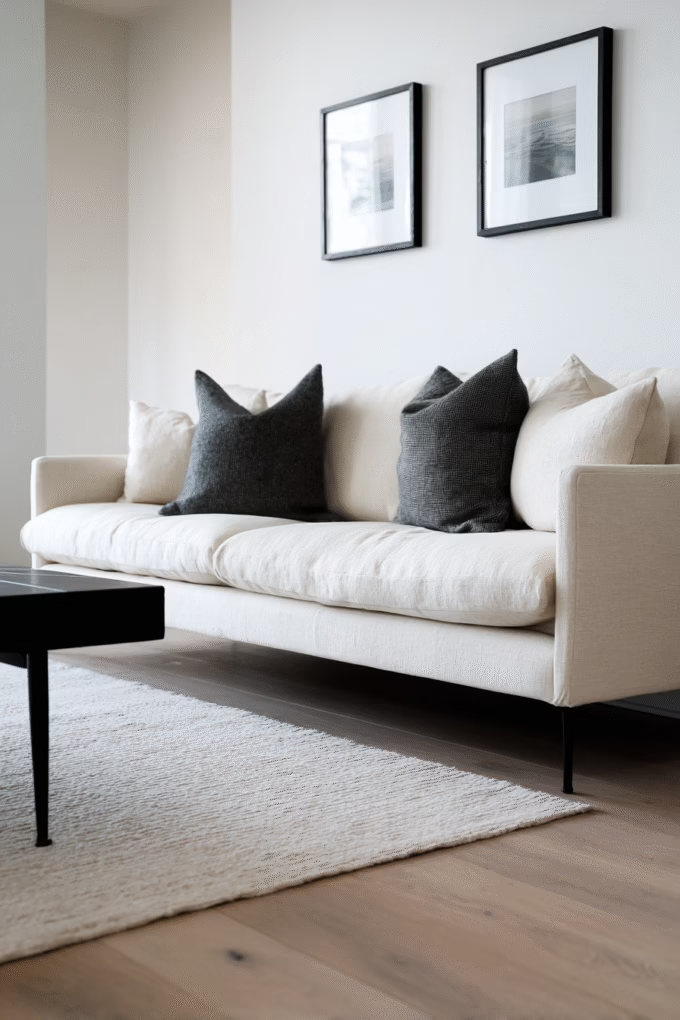
All-light rooms can feel flat and lack dimension. Add depth to your neutral japandi living room with intentional dark accents. Black picture frames, a charcoal throw pillow, or dark wooden furniture pieces create visual interest and prevent your space from washing out.
These dark elements should appear throughout your room rather than clustered in one spot. A black metal lamp base here, dark wooden legs on your furniture there, and a charcoal rug in the center distribute the contrast evenly.
Keep the ratio balanced—about 80% light neutrals and 20% dark accents works well. Too many dark pieces will make your room feel heavy, while too few won’t provide enough contrast.
14. Buy Fewer, Better Quality Pieces
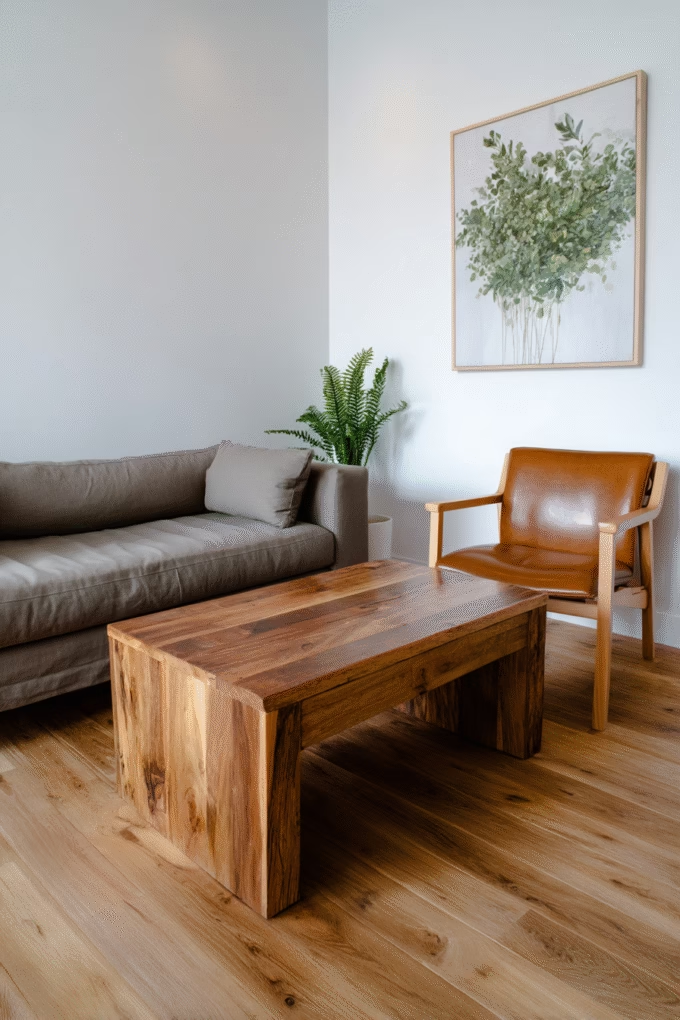
Three cheap side tables don’t serve you as well as one solid wood piece that will last twenty years. Prioritize quality over quantity in your japandi living room. Save up for furniture that’s built to last rather than filling your space with disposable pieces.
Quality furniture feels different when you use it. Solid wood drawers glide smoothly, well-made upholstery maintains its shape, and proper construction means no wobbling or creaking. These details matter daily.
This approach also reduces waste and saves money long-term. Replacing cheap furniture every few years costs more than investing in quality pieces upfront. Plus, your living room will look and feel better with fewer, better items.
15. Embrace Darker Wood Tones
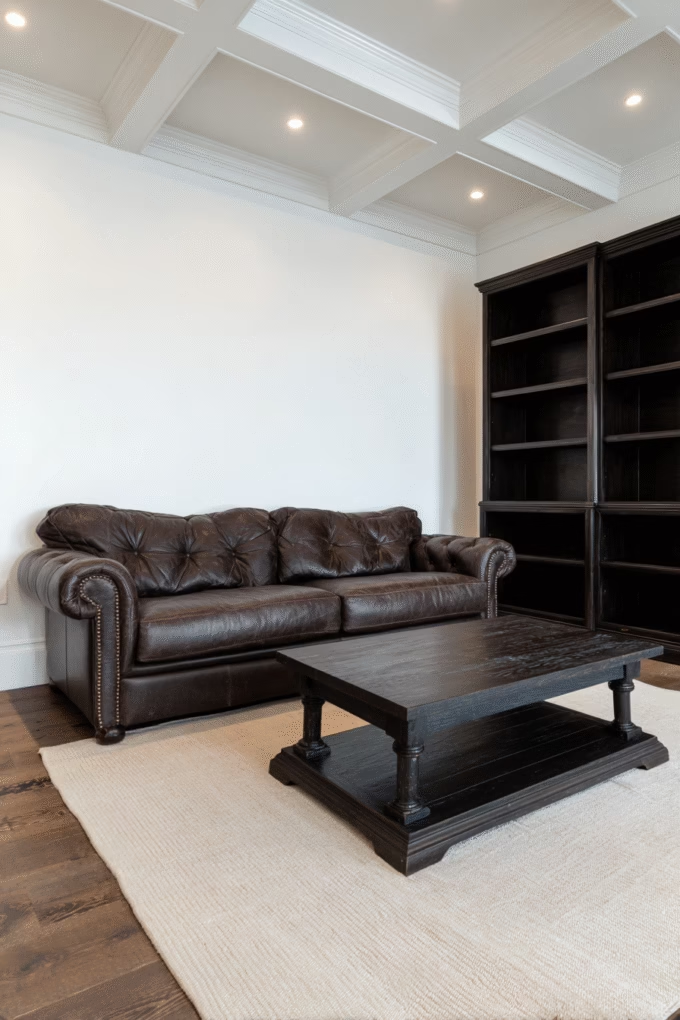
Japandi living rooms don’t have to be light and bright. Deep brown woods like walnut, espresso oak, and dark teak create a moody, sophisticated atmosphere that’s equally valid. These darker tones add richness and drama while maintaining the natural material focus.
Balance dark wood with light walls and upholstery to prevent your room from feeling heavy. A dark wooden entertainment center looks stunning against white walls, and a deep brown coffee table pops against a cream rug.
This darker approach works especially well in rooms with good natural light. The sunlight highlights the rich wood grain and prevents the space from feeling cave-like.
16. Add One Muted Color Accent
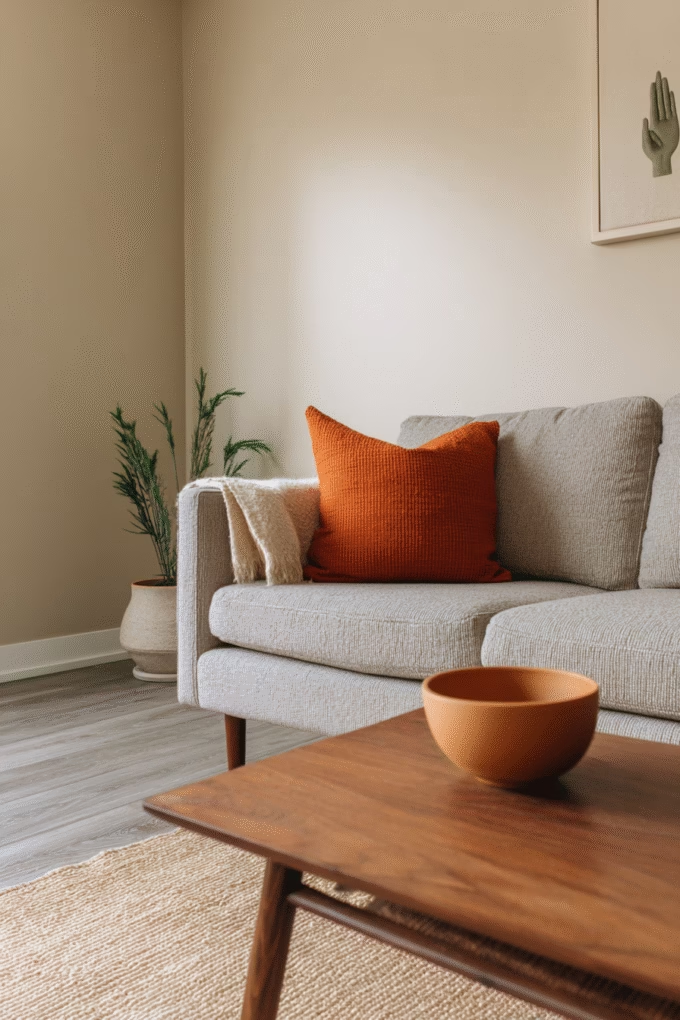
Your neutral japandi living room can handle a subtle pop of color. Rust orange, sage green, dusty blue, or terracotta bring warmth without overwhelming your space. Use this color sparingly—maybe in one throw pillow, a single piece of art, or a ceramic vase.
Choose muted, earthy versions of colors rather than bright saturated hues. Think desert sunset orange instead of traffic cone orange, or dried sage green instead of lime green. These softer tones blend naturally with neutral palettes.
Limit yourself to just one accent color throughout your entire living room. Multiple colors create visual chaos that conflicts with the calm japandi aesthetic.
17. Choose Low-Profile Seating
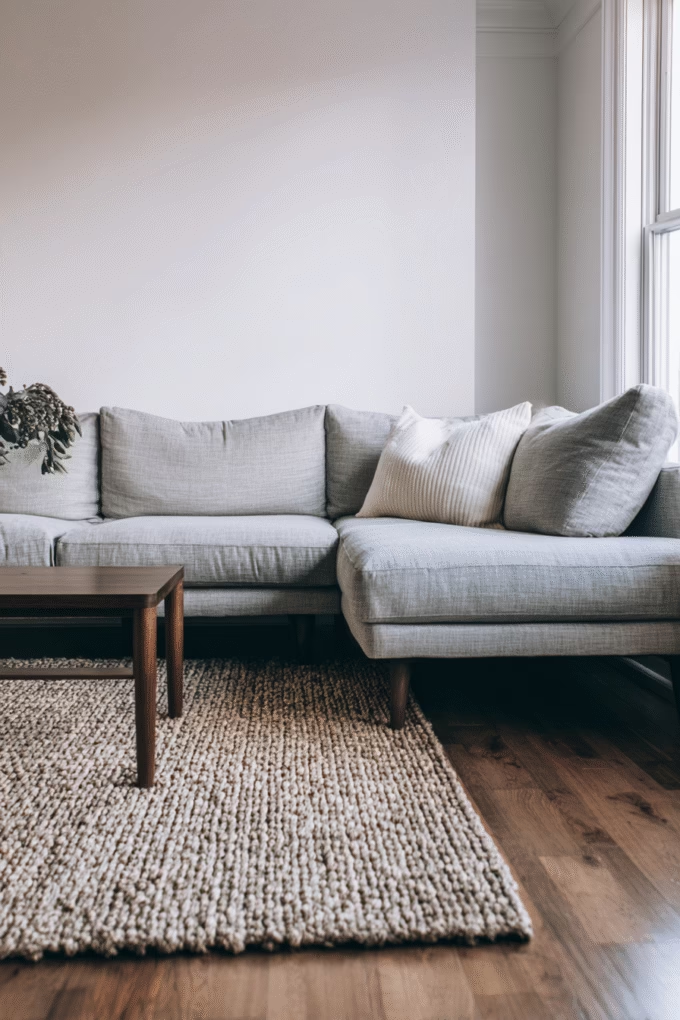
Furniture that sits closer to the ground creates a more grounded, peaceful feeling in your japandi living room. Look for sofas and chairs with low seat heights and minimal legs that keep the visual weight near the floor.
This low profile also makes your ceiling feel higher and your room feel more spacious. The extra vertical space above your furniture creates an open, airy quality that’s harder to achieve with taller pieces.
Low seating doesn’t mean uncomfortable seating. Choose pieces with proper cushion support and back angles. You want furniture that sits low but still feels good for hours of use
18. Display Minimal Abstract Art
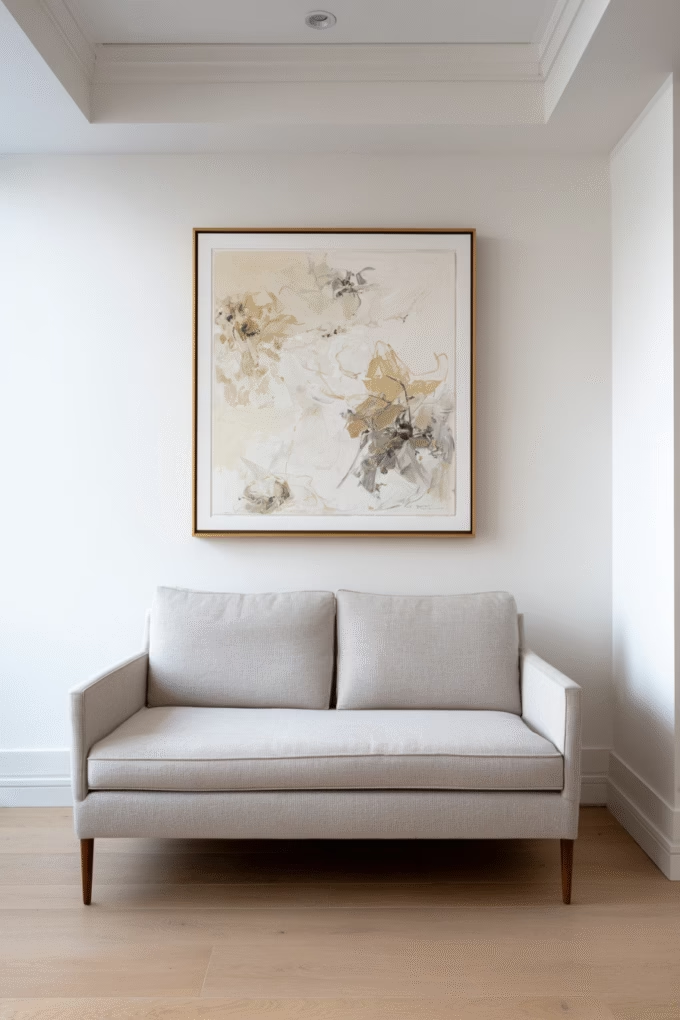
One large piece of abstract art makes more impact than multiple small prints. Choose artwork with neutral tones, organic shapes, or simple geometric patterns. The art should enhance your space without demanding constant attention.
Hang your artwork at eye level with plenty of blank wall space around it. The empty wall serves as a frame, making your art piece feel more important and intentional.
Skip busy gallery walls with dozens of frames. One thoughtfully chosen piece creates the calm, focused aesthetic that defines japandi living rooms.
19. Incorporate Paper Lantern Lighting
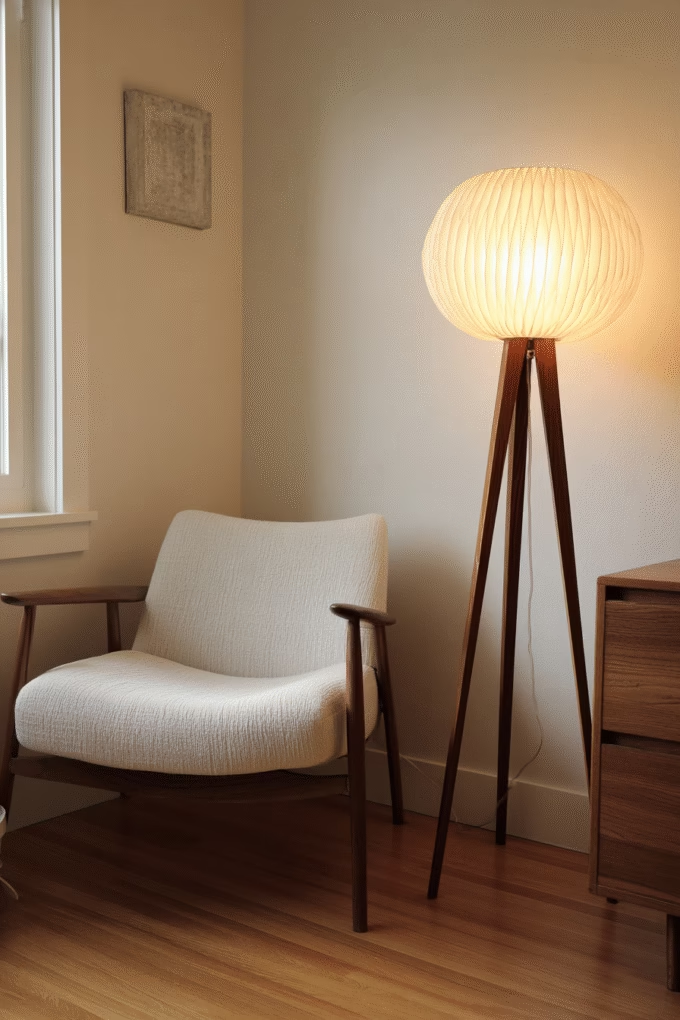
Japanese paper lanterns bring soft, diffused light to your living room while adding architectural interest. Modern versions come in clean spherical or cylindrical shapes that fit perfectly with japandi aesthetics. Choose white or cream paper with simple designs.
These lights work as pendants, floor lamps, or table lamps. A large paper sphere pendant over your seating area creates a stunning focal point, while smaller versions on side tables add ambient lighting.
The light through rice paper creates a warm glow that’s much softer than exposed bulbs or regular lamp shades. This gentle illumination contributes to the calm, peaceful atmosphere you’re creating.
20. Add Vertical Wood Slat Accents
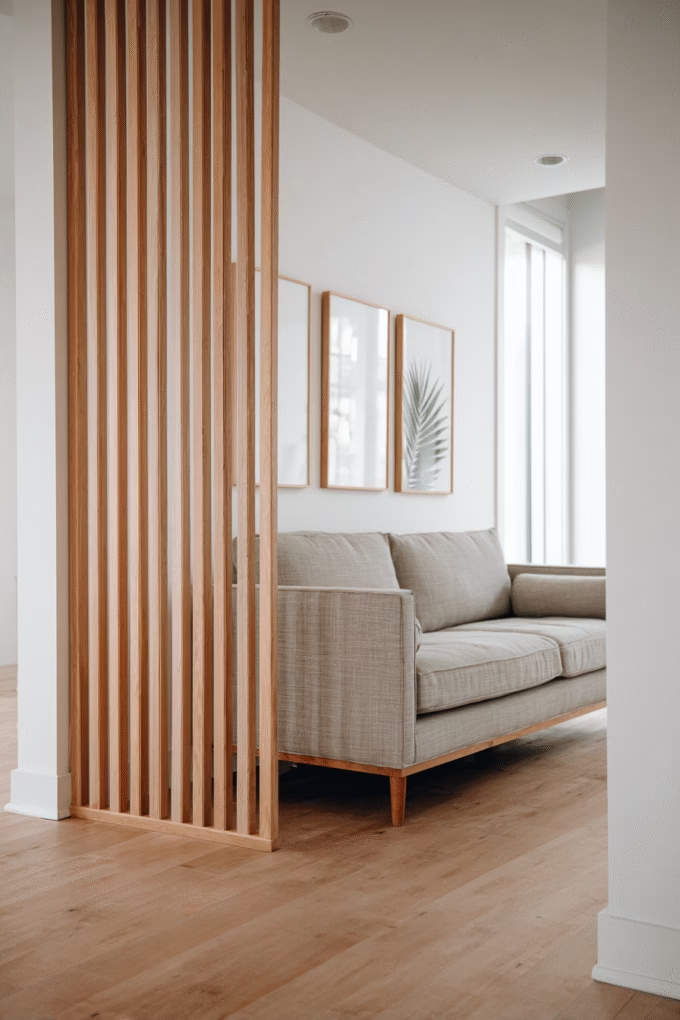
Wooden slats on one accent wall create visual interest and texture without overwhelming your japandi living room. Choose vertical slats in a medium wood tone spaced evenly across the wall surface. This architectural detail adds warmth and dimension.
You don’t need to cover an entire wall. A 4-foot wide section behind your sofa or flanking your TV creates impact without feeling excessive. Keep the slats simple with consistent spacing and no decorative details.
These slats also serve practical purposes—they can hide wiring, create subtle room division, or improve acoustics. The functional beauty aligns perfectly with japandi principles.
21. Choose Natural Fiber Window Treatments
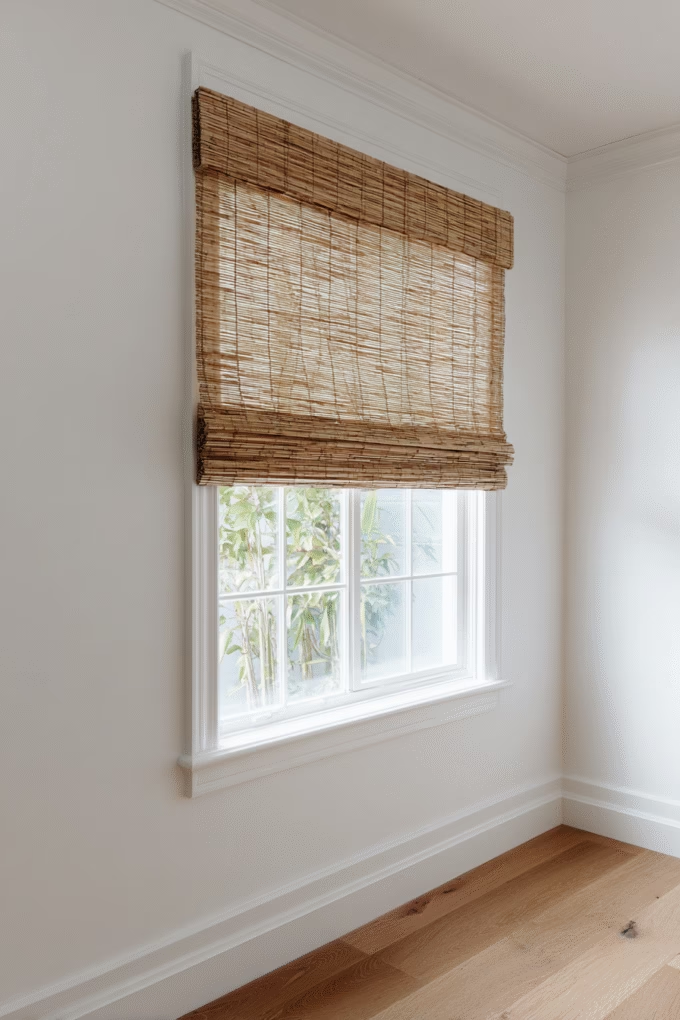
Bamboo shades or linen curtains in natural tones provide privacy while maintaining the organic material focus. These window treatments filter light beautifully and add subtle texture to your walls without drawing excessive attention.
Bamboo shades work especially well in japandi living rooms because they reference Japanese design while providing practical light control. Choose woven bamboo in natural honey tones rather than stained or painted versions.
Keep the hardware simple—basic mounting brackets and pulls in brushed metal or wood. No decorative tassels, unnecessary trim, or complicated mechanisms.
22. Arrange Furniture for Easy Movement
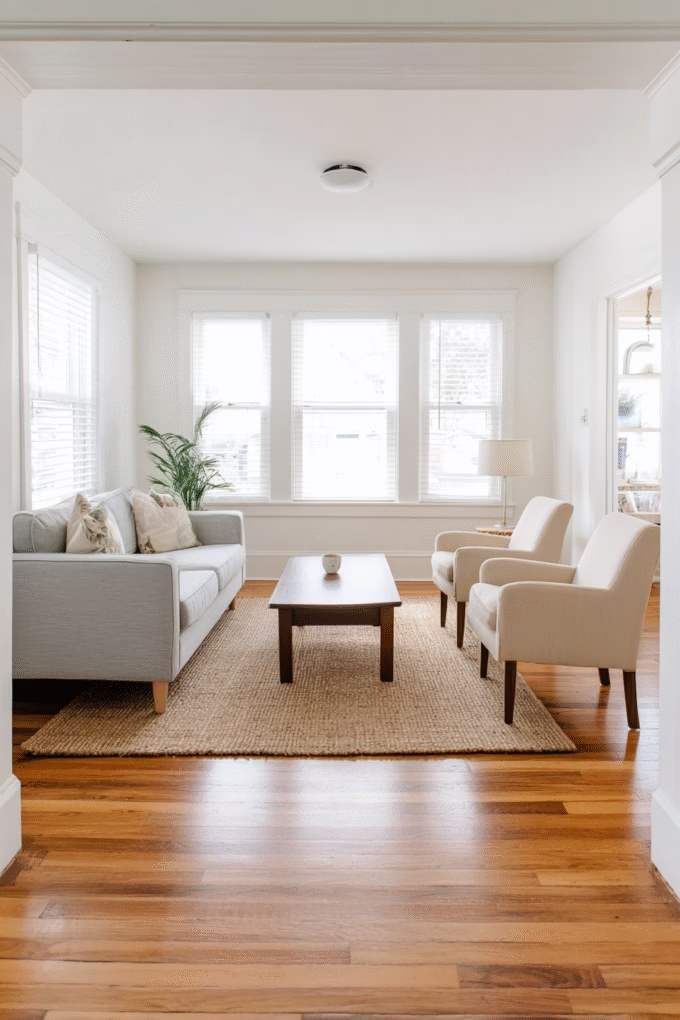
Your living room should feel open and navigable, not like an obstacle course. Create clear pathways at least 30 inches wide between furniture pieces. Position seating to encourage conversation without blocking traffic flow.
Test your arrangement by walking through the space. If you’re turning sideways to squeeze past furniture or taking indirect routes to avoid obstacles, you need more space. Move pieces farther apart until movement feels natural and effortless.
This open arrangement also makes cleaning easier and allows your room to serve multiple purposes. You can easily rearrange for guests or different activities when furniture isn’t crammed together.
23. Add Soft Textures for Comfort
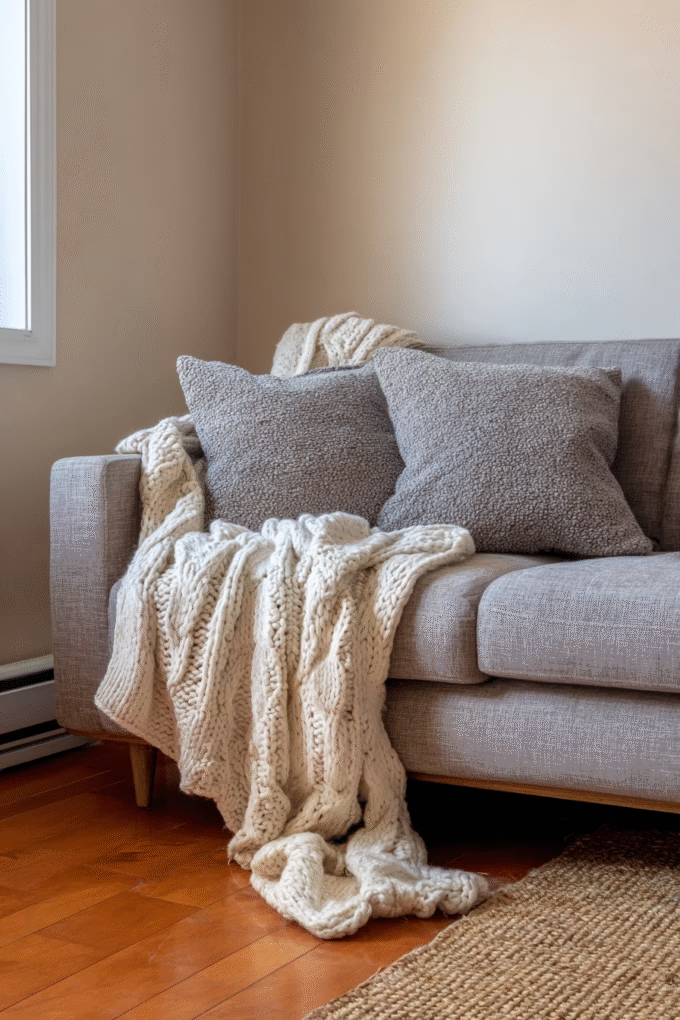
Minimalism doesn’t mean sacrificing comfort. Layer soft textures throughout your japandi living room—a plush wool throw draped over your sofa, thick cotton cushions, and a high-pile jute rug underfoot. These tactile elements make your space inviting and comfortable.
Choose textures in your existing neutral palette. A chunky cream knit throw, gray wool pillows, and a natural jute rug add variety without introducing new colors. The different textures create visual interest through dimension rather than pattern or color.
Quality matters with soft goods. A genuine wool throw feels and performs better than synthetic alternatives. Natural fibers breathe, regulate temperature, and age beautifully—all important in japandi spaces.
Conclusion
Creating your perfect japandi living room comes down to thoughtful choices. You’ve learned how to strip away the excess, choose furniture that will last decades, and layer natural materials for warmth and texture. The beauty of this style is that it’s achievable without a complete overhaul—start with one or two changes and build from there.
Focus on what matters most in your space. Maybe that means investing in a quality solid wood coffee table first, or clearing your surfaces to create instant visual calm. Each small change moves you closer to that peaceful, functional living room you’re after.
Your japandi living room should reflect how you actually live. Keep the principles of minimalism, natural materials, and neutral tones as your foundation, but adapt them to fit your daily routines. The goal is a space that serves you well and helps you relax—not a museum display that stresses you out to maintain.
Key Takeaways
- Japandi living rooms blend Japanese minimalism with Scandinavian warmth, creating a peaceful and functional space.
- Key elements include neutral colors, natural materials, and functional furniture—prioritizing quality over quantity.
- Incorporate soft textures, living greenery, and natural light to enhance the calming atmosphere.
- Layer different wood shades and embrace imperfections to add character and depth to the design.
- Start small; focus on thoughtful changes to achieve a tranquil, inviting japandi living room.

